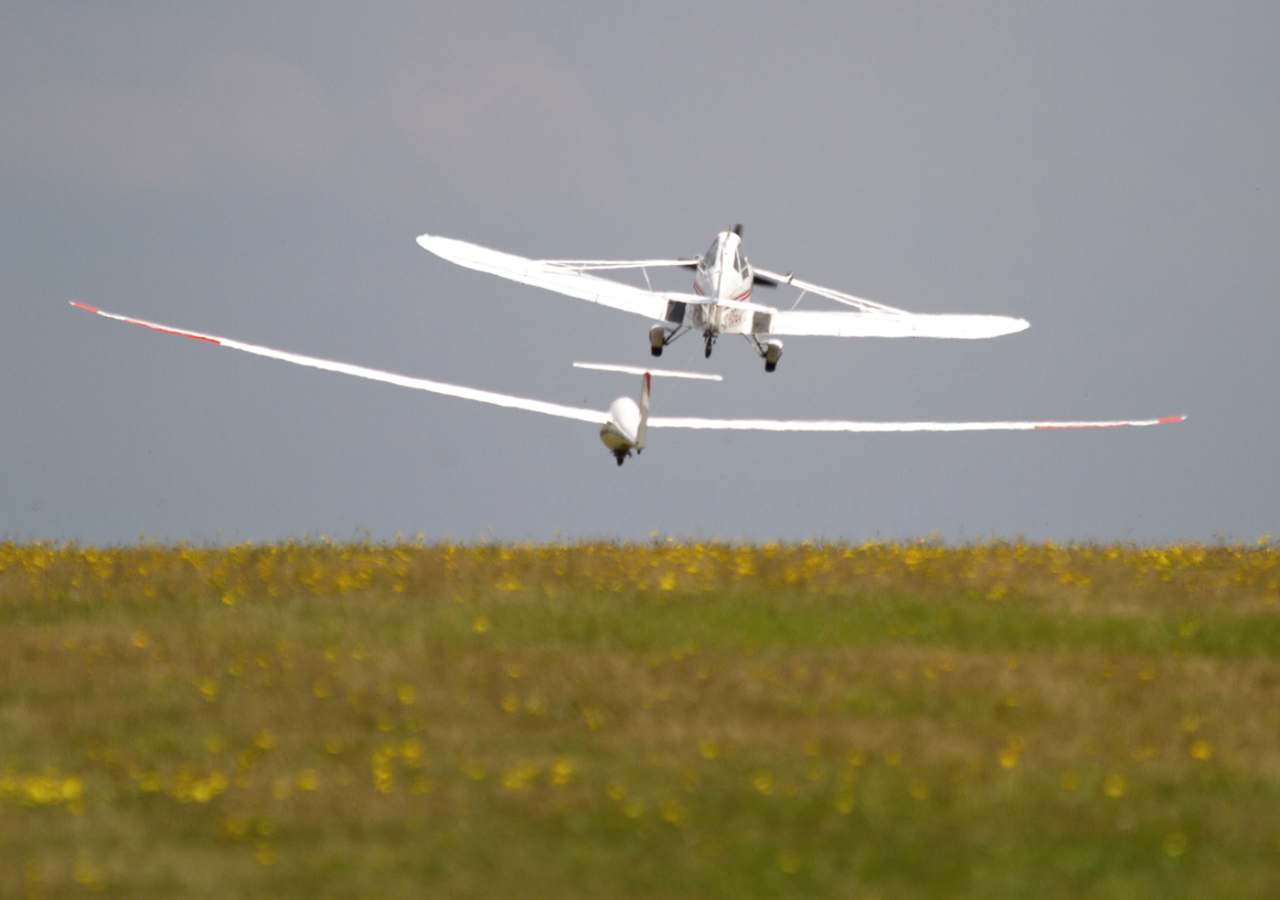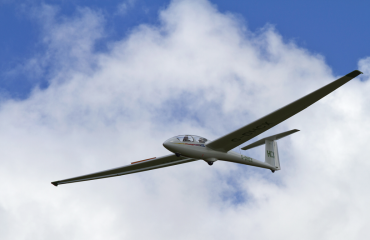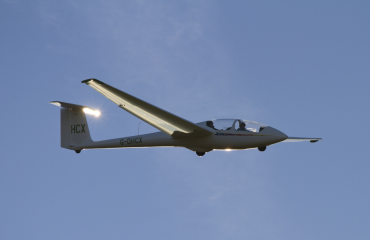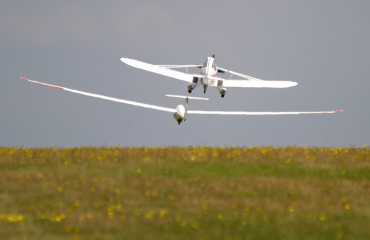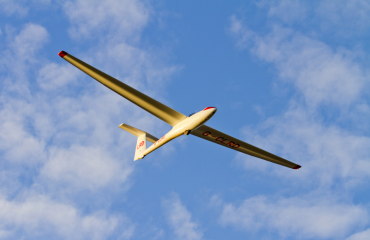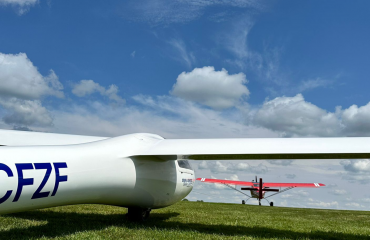Gliders fly without an engine, how does that work?
As it moves forward, the airflow over an aircraft wing produces an upward force capable of supporting its weight.
In a powered aircraft, the engine propels the aircraft through the air to produce this airflow. Gliders create this airflow by continuously descending.
To stay airborne, gliders need to find and fly in air that is going up, rising in the atmosphere, at least as fast as the glider is descending.
Here we can learn from the birds!
Soaring is the art of using air currents to stay airborne.
The action of the air in keeping the glider airborne or even gaining height is called ‘lift’ by glider pilots, and there are four main sources of this precious commodity which the glider pilot can use…
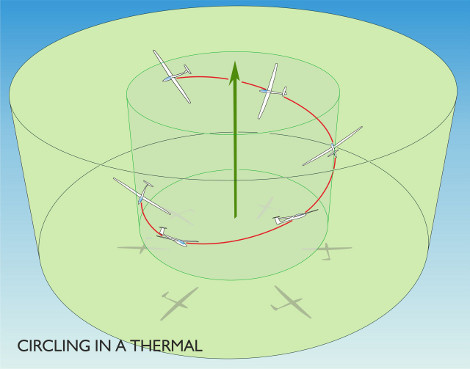
Thermal Lift
On a summer’s day, you’ll often see birds circling upwards without flapping their wings. They are “Thermalling”.
A thermal is a volume of air that has been heated by the sun that is warmer than the surrounding air. As we know, hot air rises, and circling within this rising air allows birds, and gliders, to go upwards.
So how do we know where the thermals are? Sometimes this is educated guess work, based on observing ground features below us and how they might warm the air. However, often Cumulus, cotton-wool type clouds form at the top of a thermal, marking where they are.
Occasionally, we may be joined in a thermal by a bird – anything from a swift to an eagle. We mostly share with Buzzards! You can never do it as well as they can, but it’s great fun trying!
Thermals are used in cross-country flying – you climb in a thermal to gain the height to move forwards to the next thermal on your track. The longest flight in the UK was done like this, covering over 1000 kilometres in a ten hour flight. The longest thermal cross-country flight from North Hill is just over 500 kilometres.
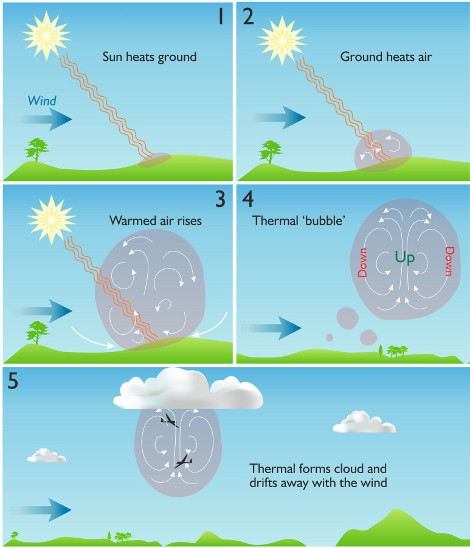
Ridge Lift
Ridge lift requires a hill with a steepish ridge, and the wind to blow against the face of it. When the wind hits the hill, it gets forced upwards.
Again, it is this upward movement of air that allows gliders to stay airborne. With a long ridge, it’s possible to do large distances without turning, generally flying fast and low to stay in the best “lift” close to the ridge.
North Hill has a small northwest facing ridge, and a very short south ridge, but in the right conditions it is possible to stay airborne for 5 hours, and achieve a Silver Badge duration on the ridge.
A ridge can also be a good source for kicking off thermals.
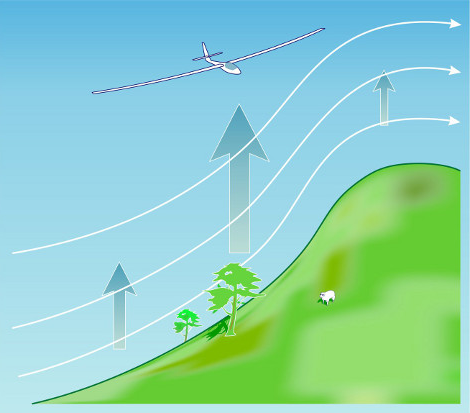
Wave Lift
Similar to ridge lift is a phenomenon called “wave lift”.
It arises from the wind blowing against a hill, but this time the air comes back down on the far side of the hill, “bounces” off the ground and goes back up again creating a very smooth upwards flow of air. Often, this form of lift is capped by cigar shaped “lenticular” clouds. This wave may go back down and up again for several cycles, meaning that you don’t actually have to be close to any hills to use it.

The furthest flights in gliders have been achieved with Wave lift, the best being 2900 kilometres along the Andes, all in one flight and one day. Wave lift is also known to go very high, the world height record in a glider is just over 76,000 feet!
In the UK, 1200 kilometres wave flight has been achieved in Scotland. North Hill can get wave conditions from air over Exmoor and Dartmoor.
Sea Breeze Convergence
On the southwest peninsula of the UK, we are fortunate to benefit from both North and South coasts, within range of North Hill.
On many summer days when the land heats up faster than the sea, and in certain wind conditions, lines of convergence lift may set up parallel to the coasts.
This provides the opportunity to fly along these lines of lift into Cornwall or Dorset.
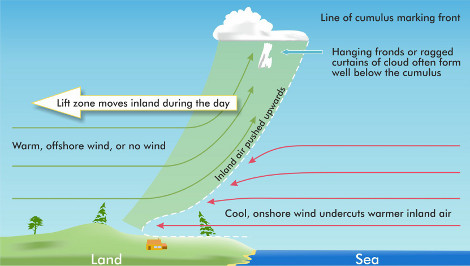
Take your first steps into flight! Discover if Gliding is for you, or buy someone a Gift Voucher


